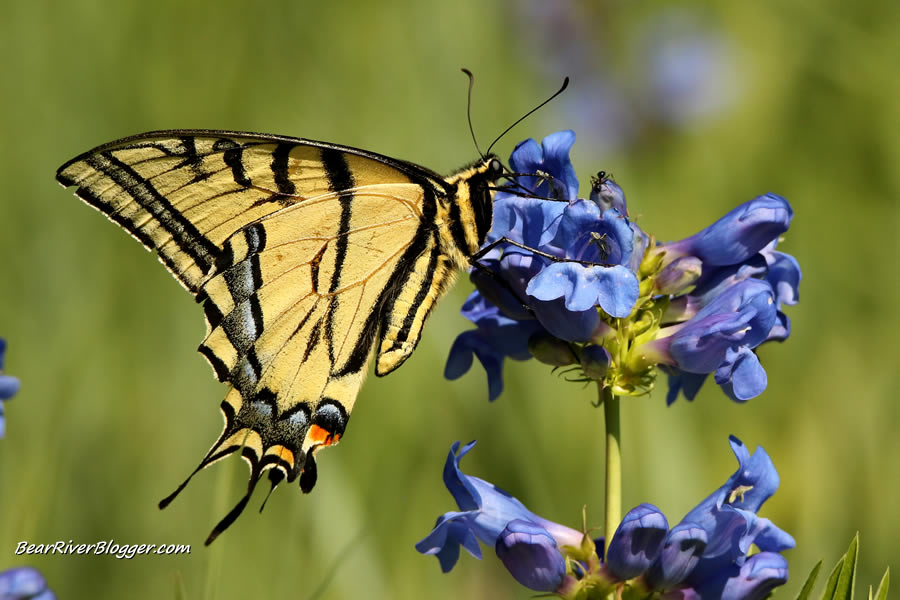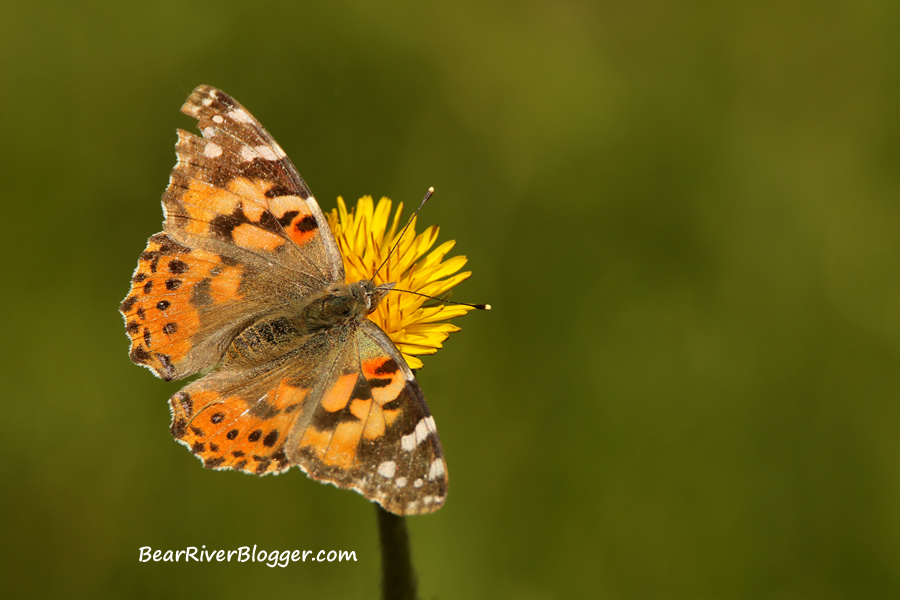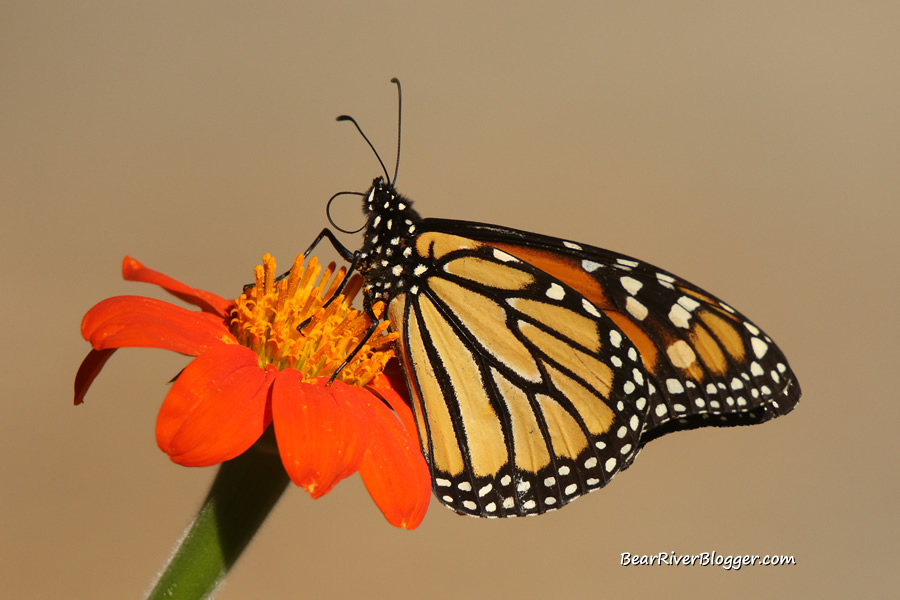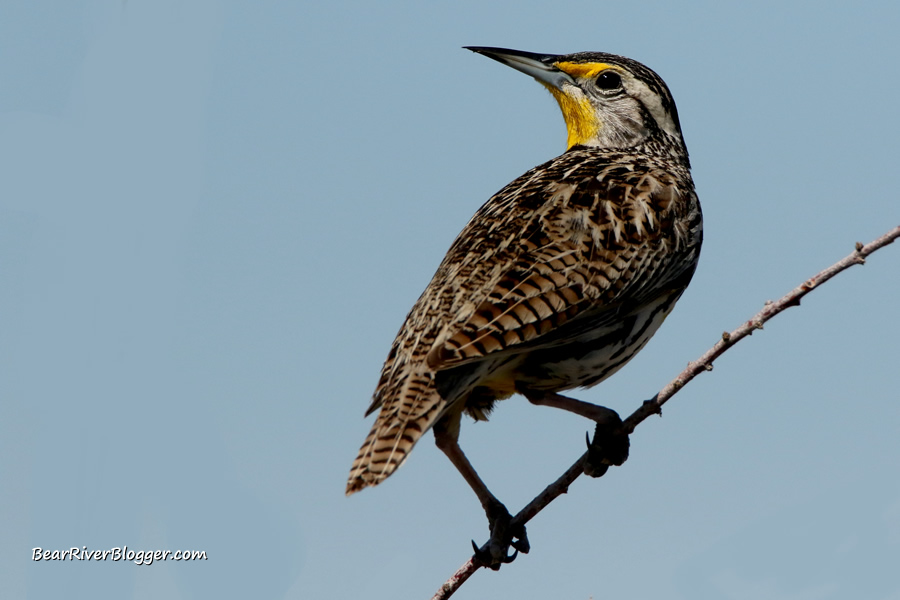Thanks to several days of abnormally warm February weather last week and a couple of very out-of-season butterfly sightings at Farmington Bay, my mind has now started to wander towards, well, you guessed it, butterflies, namely the beautiful two-tail swallowtail butterfly.
Yes, you read that right, I have already seen several butterflies this year and it’s only February, a time of year when we should be hard at work shoveling the sidewalk and only dreaming of chasing butterflies somewhere high up on a mountainside filled with wildflowers.
The question some people might be asking is how on earth are butterflies flying around in mid-February, even with the unseasonably warm weather we’ve been having.
I mean, seriously, it’s the middle of winter, a time meant for snow shovels, not butterfly nets.
And why do some butterflies emerge so early while others don’t appear until much later in the year despite both of them living in the same area?

Well, the answer to that is different species of butterflies overwinter in different stages of life, some as eggs, others as larva, pupa, and even as an adult butterfly.
That was the case of last week’s sighting of a small white butterfly as it obviously overwintered as an adult.
Suffice it to say, the butterfly emerged from its’ chrysalis during fall, found a safe hiding place and slowed down its’ metabolism, and, lack for a better term, essentially hibernated (actually referred to as diapause by the way) throughout the winter as a butterfly until spring when the outside temperature warms up again.
Butterflies are cold-blooded creatures, otherwise known as ectothermic, meaning they don’t regulate their own body temperature but rely on other sources for warmth, like the sun, for example.
When the outside temperature reaches around 50 degrees Fahrenheit for a few days, butterflies that overwinter as adults, such as the small whites I actually saw just a few days ago, start to “wake up” and take to the wing even when the calendar says it’s only February.

And when it cools back down again like it did today where the high temperature is, unfortunately, well below the freezing mark, the adult butterflies return to their places of hiding and begin hibernating once more until it warms up again.
It is quite odd I will admit seeing butterflies when we should be seeing snow, but that is what can and does happen when we get these unusually warm, dry winters.
And strangely enough, on the same day I was watching butterflies at Farmington Bay, another visitor was photographing a garden snake, one more cold-blooded creature that can also emerge during these early warm spells.
But as previously mentioned, not all butterflies overwinter as adults, though, as some of them overwinter as pupa in chrysalis form, the hardened outer shell caterpillars metamorphize into adults in.
Butterflies that overwinter as pupa, like the two-tail swallowtail, for example, will emerge much later in the spring when it warms up enough to trigger the end to diapause and finish the metamorphosis stage, finally emerging from the chrysalis as an adult butterfly.
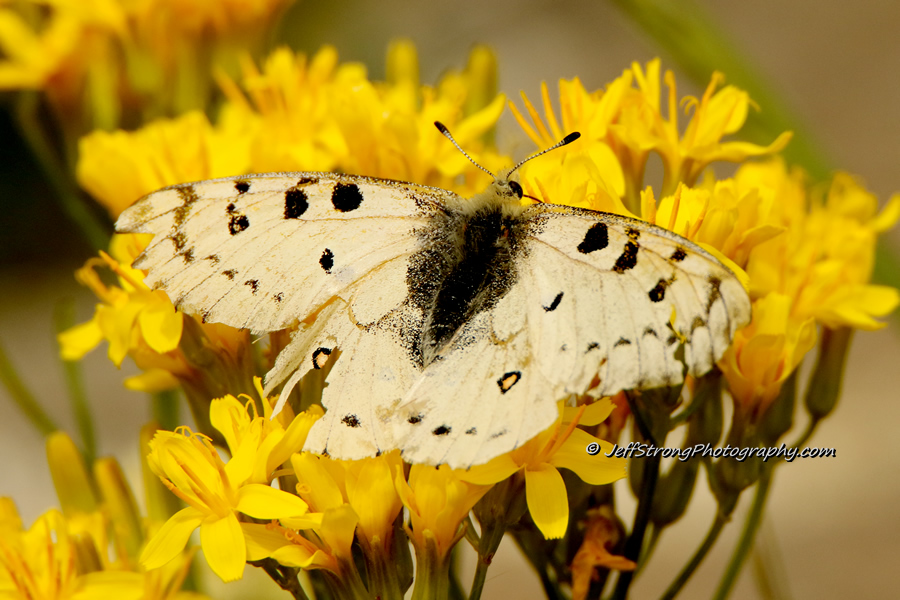
It will be several months before the first appearance of swallowtail butterflies down here in the valley occur when they start to emerge from their chrysalis, and several months more past that for up in the mountains where the best butterfly action is if truth be told.
The life cycle of butterflies is nothing short of fascinating.
It’s why I spend so much time during the summer looking for and photographing butterflies anywhere and everywhere I can find them.
Believe it or not, I find the Bear River Migratory Bird Refuge auto tour route actually has some pretty good butterfly habitat, including milkweed for monarchs, for anyone willing to slow down and take the time to look for the variety of butterflies that actually live on or migrate through the refuge during various parts of the year.
Logan Canyon is, however, one of the best places in northern Utah to see a lot of butterflies during spring and summer.

Besides Farmington canyon in Davis County, Logan canyon is where I frequent the most when the urge to find butterflies is too great to tame.
During the summer months up Logan canyon, the popular recreation spot Tony Grove comes alive with both butterflies and wildflowers, a festival of color and beauty if you are one that enjoys nature’s colorful palette in such a manner.
The easiest way to find out more about where butterflies are found in Utah is to join Utah Butterfly Field Trips, a popular local butterfly group on Facebook.
It sounds weird to be so excited about butterflies when tonight the temperature will dip at least 20 degrees below the freezing mark but that is what an early-season butterfly sighting does to a person.

Much like my passion for birds, I hope the similar love and enthusiasm I have for butterflies can rub off on anyone and everyone that reads my blog posts in an effort to get more people interested in these beautiful and delicate winged creatures.
If you love nature, birds, bees, butterflies, and what have you, I offer you to head on over to our subscribe page and sign up for email notifications for future blog posts.
I truly appreciate your readership and support for my website and enjoy bringing you a small slice of our natural world captured with my camera each time I head outdoors.
Save The Migration Monarch Butterfly T-shirt, available in a variety of colors and styles. Visit our online store for more information or to make a purchase, and use coupon code save20 for 20% off for a limited time.


